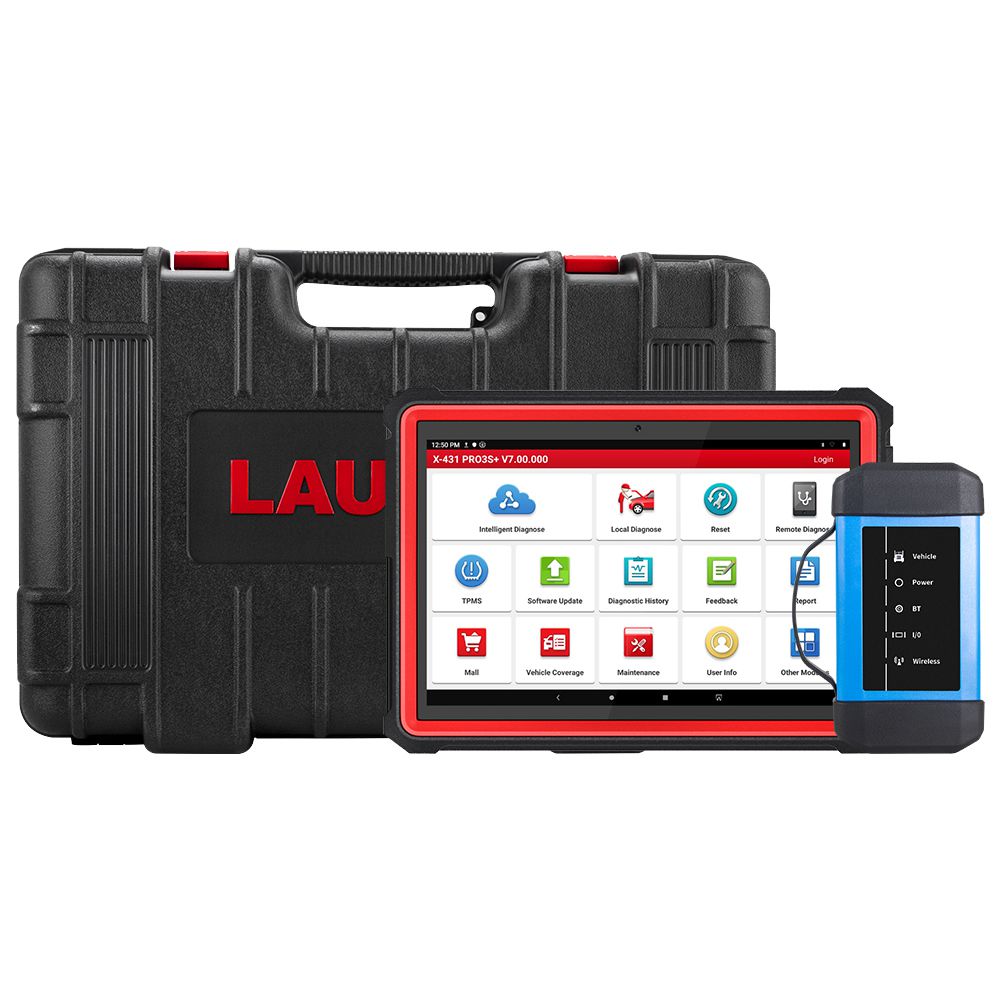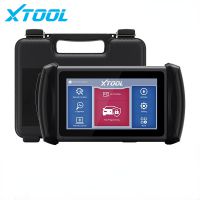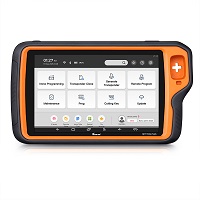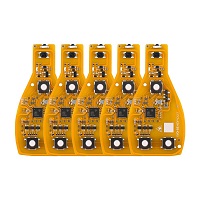Produtc Detailed
1.9-in-1 battery monitor, single interface 9 data;
2.use the battery monitor to easily understand the real-time data of the battery.
3.LCD high-definition display with backlight function battery meter provides you with a better visual experience, even in the dark environment can easily read and monitor your battery.
4.Plug-in terminal design DC meter.No screwdriver is needed,easy to install and remove
5.Accurate measurement-voltage (0-200V), current (0-100A), power (0-6000W), impedance (0-1000Ω), internal resistance (0-999mΩ), capacity (0-1000AH), energy (0~ 999kWh), running time (0~9999 hours), battery So.C (0-1 00%);
6.The 100A DC battery monitor is widely used in solar energy systems,industrial assembly lines,automobiles, RVs,ships and trailers.
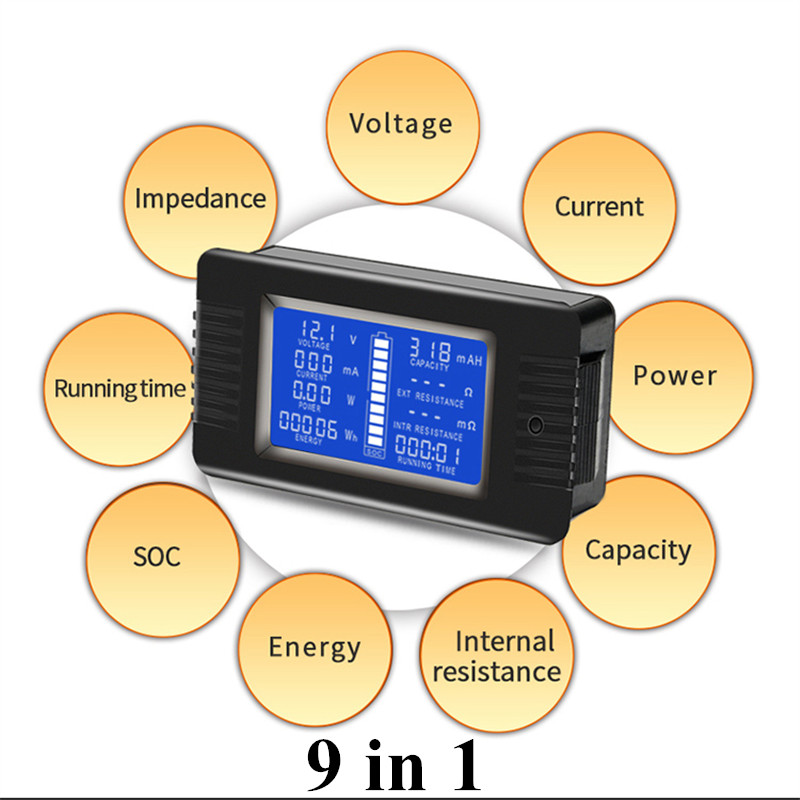
1. Function description
1.1 Voltage
1.1.1 Measuring range: 0-200V.
(when the test voltage is less than 8V, please use the independent power supply mode)
1.1.2 Display format:
less than 10V display as: 9.99V
less than 100V display as: 99.9V
greater than 100V display as: 199V
1.1.3 Minimum resolution:0.01V
1.1.4 The starting test voltage: 0.05V
1.1.5 Measurement accuracy:1%
1.2 Current
Measuring range:0-300A(Type: PZEM-015)
can set 50A, 100A, 200A,300A four range depend on the external shunt, the factory default is 100A.
1.2.2 Display format:
<1A display as: 999mA
<10A display as: 9.99A
<100A display as: 99.9A
≥ 100A display as: 199A
1.2.3 Minimum resolution: 1mA
1.2.4 The starting test current: 20mA(Type: PZEM-015)
1.2.5 Measurement accuracy:1%
1.3 Power
Measuring range:0-60000W(Type: PZEM-015).
1.3.2 Display format:
< 10W display as: 9.99W
< 100W display as: 99.9W
< 1000W display as: 999W
< 10000W display as: 9.99kW
≥ 10000W display as: 19.9kw
1.3.3 Minimum resolution: 0.01W
1.3.4 The starting test power: 0.2W (Type: PZEM-015)
1.3.5 Measurement accuracy:1%
1.4 Impedance
Impedance=Voltage/ Current
1.4.1 Measuring range: 0-1000ohm
1.4.2 Display format: < 100ohm display as: 99.9ohm
≥ 100ohm display as: 999ohm
When over the test range or the current is zero, it display "---"
1.4.3 Minimum resolution: 0.1ohm
1.4.4 Measurement accuracy:1%
1.5 Internal Resistance
Internal resistance= (Full voltage - Bring load voltage) / Bring load current,
when the bring load voltage is larger than the maximum voltage, the internal resistance is zero.
1.5.1 Measuring range: 0-999 milliohm
1.5.2 Display format: 999 milliohm , when over the test range or the current is zero, it display "---".
1.5.3 Minimum resolution: 1 milliohm
1.5.4 Measurement accuracy:1%

Note: Before you test the internal resistance, you should preset the full voltage depend on the battery type, after it is fully charged you can use it to test; if you do not fully charge it, you can set the battery without load voltage is the full voltage, then test; the internal resistance is not a fixed value, the more the battery discharged, the bigger the resistance.
1.6 Capacity
1.6.1 Measuring range: 0-1000AH
1.6.2 Display format:
< 1AH display as: 999mAH
< 10AH display as: 9.99AH
< 100AH display as: 99.9AH
< 1000AH display as: 999AH
1.6.3 Minimum resolution: 1mAH
1.6.4 Measurement accuracy:1%
Note: Battery capacity testing is a cumulative process of discharge current versus time,it need some time,
the time is depend on the discharge current; before you test the capacity,you should preset the full voltage and the cut-off voltage depend on the battery type,after it is fully charged you can use it to the discharge test; When the dump energy display blank,it means the discharge is over,this capacity display value is the battery's capacity.
1.7 Dump energy
Dump energy is display via the battery symbol, totally 10 grids, every grid present 10% energy.
Dump energy is calculated via the current battery voltage value, before test you should preset the full voltage and the cut-off voltage depend on the battery type; every grid voltage = (the highest voltage - the lowest voltage) / 10.
1.8 Accumulate energy consumption
1.8.1 Measuring range: 0-9999kWh
1.8.2 Display format:
< 1kWh display as: 999Wh
< 10kWh display as: 9.99kWh
< 100kWh display as: 99.99kWh
< 1000kWh display as: 999.99kWh
≥ 1000kWh display as: 9999kWh
Over the test range will become zero.
1.8.3 Minimum resolution: 1Wh
1.8.4 Measurement accuracy:1%
Note: 1Wh=0.001kWh=0.001 Kilowatt
1.9 Running time
1.9.1 Measuring range: 0 ~ 999 hour (without load the time will not accumulate)
1.9.2 Display format: 0:00:00 ~ 999:59:59
Over the test range will become zero.
2. Operating Instructions
2.1 Setting the full and cur-off voltage
2.1.1 Set the full voltage:
Step 1: In the normal display interface(like fig. 1), long press the button until the LCD screen display the interface like fig. 2, then release the button
 Step 2: SET character blink present it is the setting status of full / cut-off voltage, long press the button until the LCD screen display the interface like fig.3, then release the button.
Step 2: SET character blink present it is the setting status of full / cut-off voltage, long press the button until the LCD screen display the interface like fig.3, then release the button.

Step 3: At this time, the battery symbol display full grids energy means the full voltage setting status,factory default the full voltage is 020.0V,the numerical code circulation flashing from the low bit to the high bit show that the current setting digit,short press to set the digit; please pay attention that,as the full voltage setting value has 4 digit, but the numerical code has only 3 digit,So the setting is divided into two parts: low bit
(fig. 3) +high bit (fig. 4).For example,the default full voltage is 020.0V, then the display state is 20.0V to 020V low and high cyclic switching display. If you need to set the full voltage is 199.0V, then please set the low bit to 99.0V, when the cycle reaches the high bit, it will display 099V, and only the highest zero bit flicker to prompt it can be setted. Setting the high bit to 199V represents the full voltage is 199.0V.

 Step 1: In the normal display interface, long press the button until the LCD shows the interface of Figure 2, then release the button,short press the button again switch to the interface to Figure 7, it indicates that this state is the current range setting state.
Step 1: In the normal display interface, long press the button until the LCD shows the interface of Figure 2, then release the button,short press the button again switch to the interface to Figure 7, it indicates that this state is the current range setting state. Step 2: Longer press the button until the LCD shows the interface of Figure 8, then release the button, short press the button again to switch the current range. This meter provides four current ranges, factory default is 100A, choose the corresponding range according to the shunt.
Step 2: Longer press the button until the LCD shows the interface of Figure 8, then release the button, short press the button again to switch the current range. This meter provides four current ranges, factory default is 100A, choose the corresponding range according to the shunt.
Step 3: After the current range setting is completed, long press the button until the settings are saved and exit the setting status, restore the normal display interface. Step 1: In the normal display interface, long press the button until the LCD shows the interface of Figure 2, then release the button,short press the button again switch to the interface to Figure 9, it indicates that this state is the clearing energy setting state.
Step 1: In the normal display interface, long press the button until the LCD shows the interface of Figure 2, then release the button,short press the button again switch to the interface to Figure 9, it indicates that this state is the clearing energy setting state.
Step 2: Longer press the button until the data has been cleared and exit the setting status, restore the normal display interface. Step 1: In the normal display interface, long press the button until the LCD shows the interface of Figure 2, then release the button,short press the button again switch to the interface to Figure 10, it indicates that this state is the clearing capacity setting state.
Step 1: In the normal display interface, long press the button until the LCD shows the interface of Figure 2, then release the button,short press the button again switch to the interface to Figure 10, it indicates that this state is the clearing capacity setting state.
Step 2: Longer press the button until the data has been cleared and exit the setting status, restore the normal display interface. Step 1: In the normal display interface, long press the button until the LCD shows the interface of Figure 2, then release the button,short press the button again switch to the interface to Figure 11, it indicates that this state is the clearing running time setting state.
Step 1: In the normal display interface, long press the button until the LCD shows the interface of Figure 2, then release the button,short press the button again switch to the interface to Figure 11, it indicates that this state is the clearing running time setting state.
Step 2: Longer press the button until the data has been cleared and exit the setting status, restore the normal display interface.
2.6 Working mode
This meter has two modes: normal display mode and dormant mode. In normal display mode, short press the button to enter thedormant mode, in order to reduce the whole machine power consumption, the backlight and LCD display will be turned off in dormant mode. In dormant mode, short press the button will switch to the normal display mode.
Note:The meter will stop all measurement functions in dormant mode, so please do not switch to dormant mode if normal measurement is performed.

3. Wiring Diagram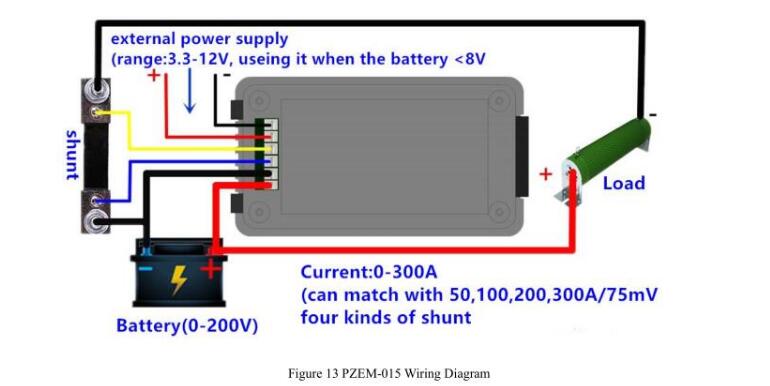
4.Dimension Figure (mm)
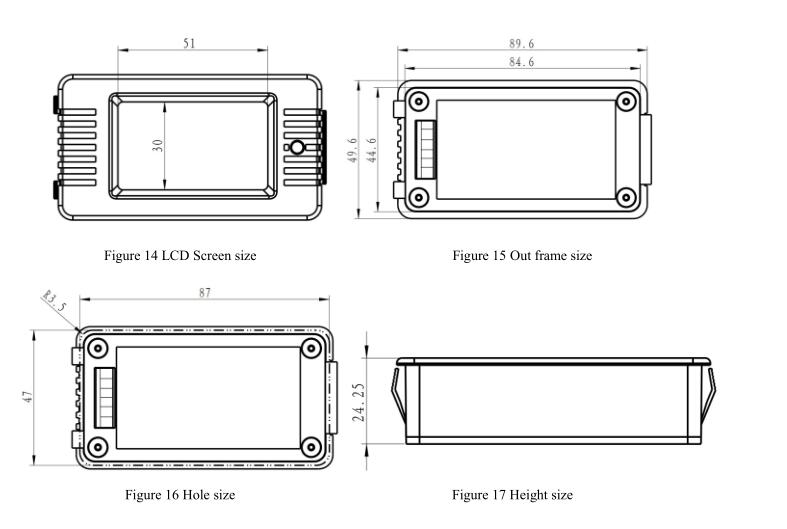

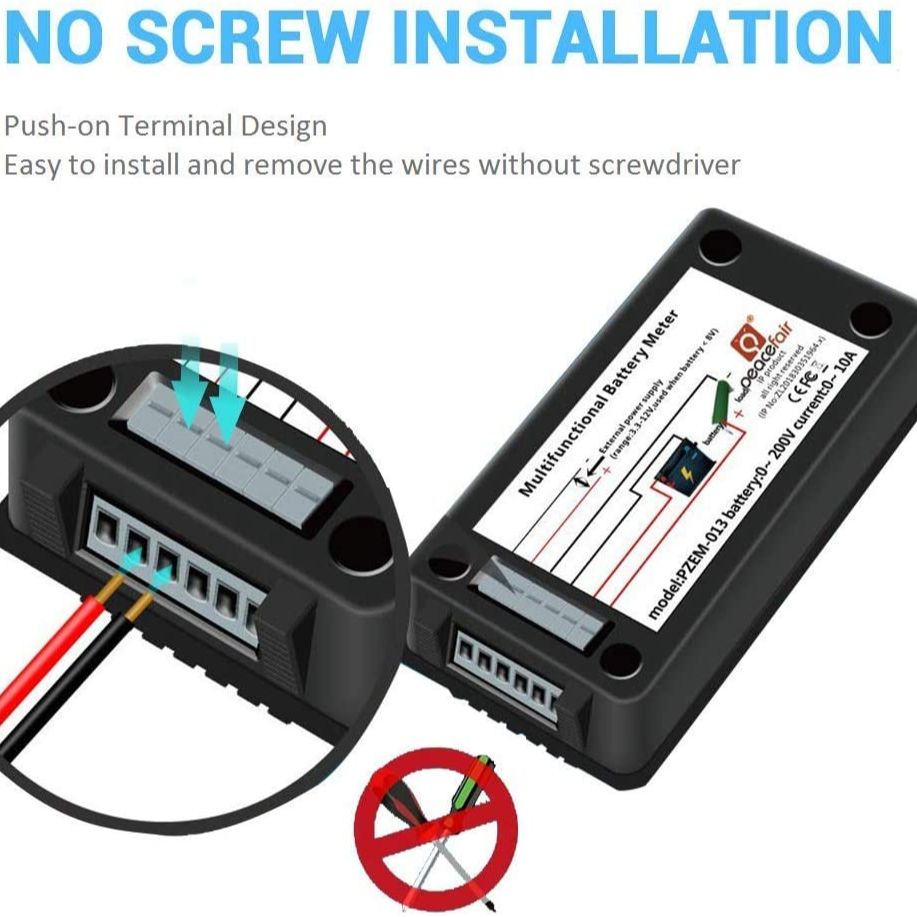

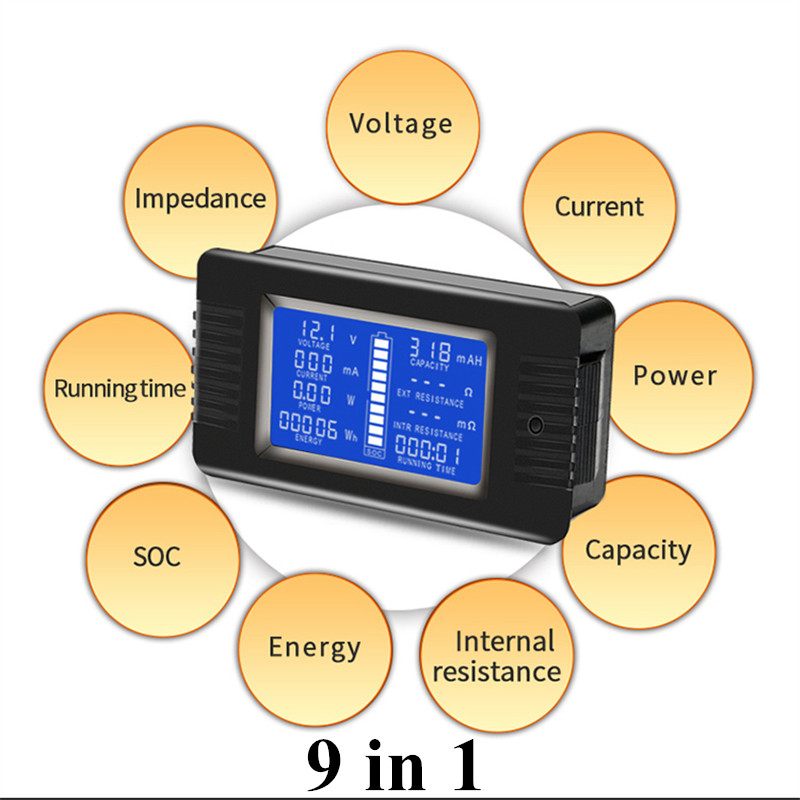
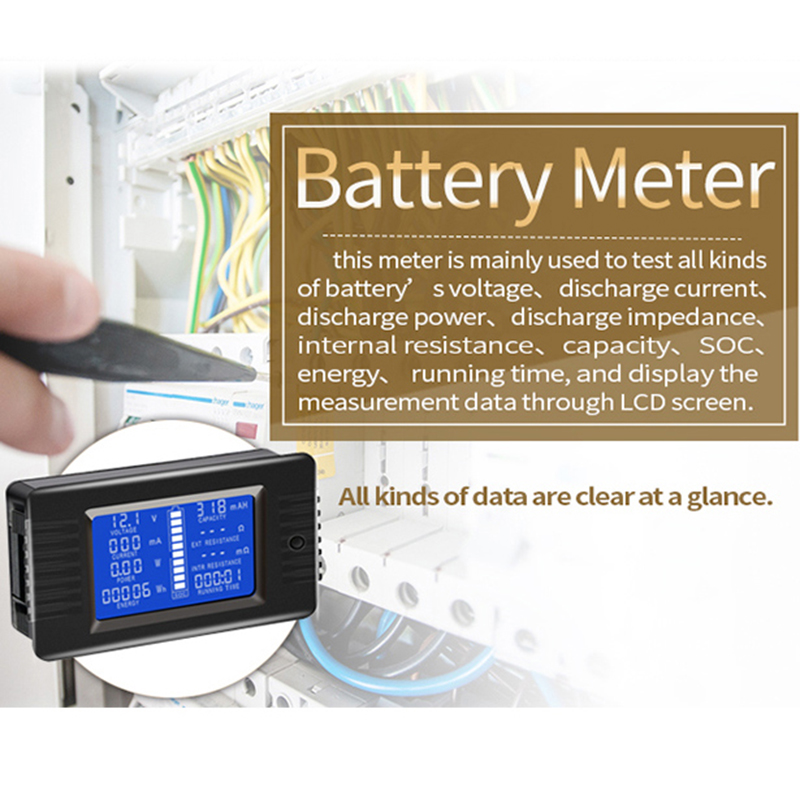
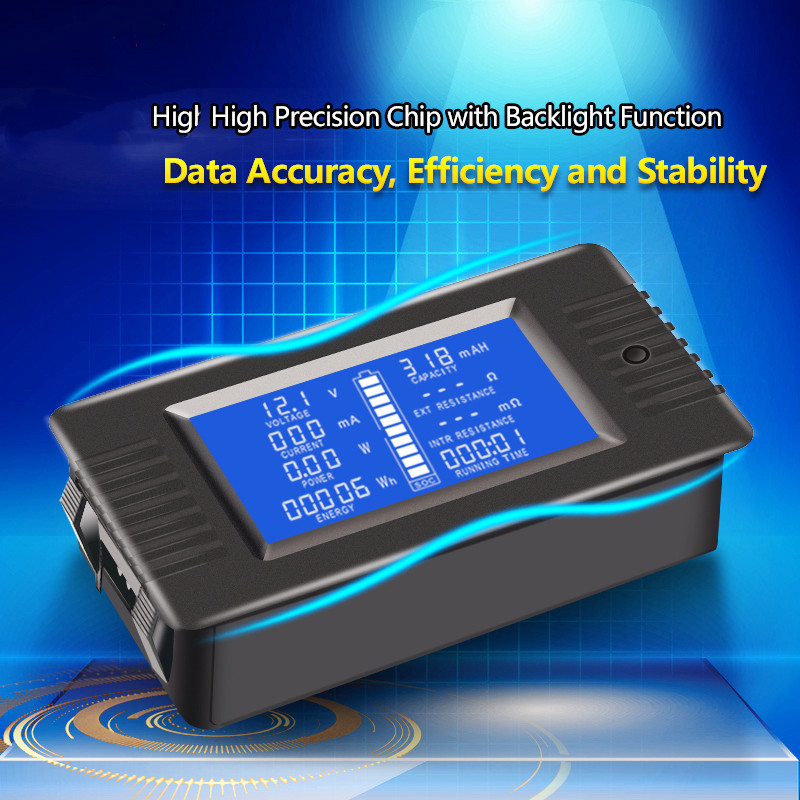






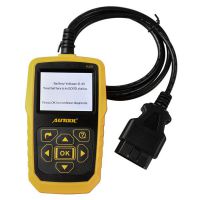


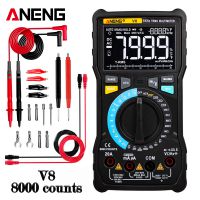


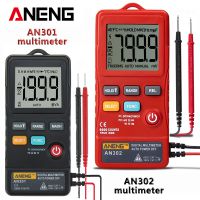

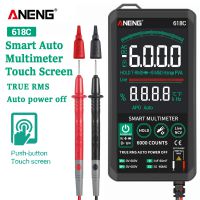




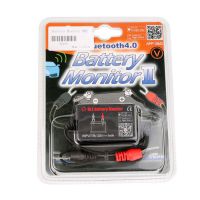
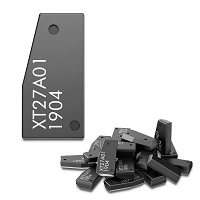
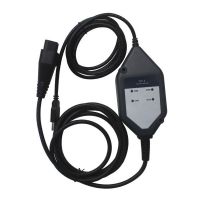
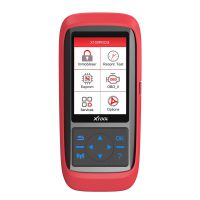
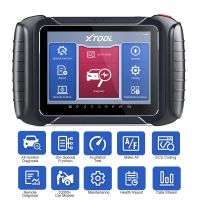

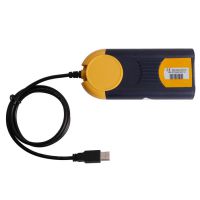
![[Full Version] V2022.12.1 KT200 ECU Programmer Master Version Support OBD BOOT BDM JTAG & ECU Maintenance/ DTC Code Removal With Free Damaos](/upload/pro/kt200-ecu-programmer-master-full-version-200.jpg)
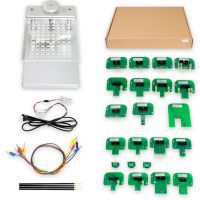
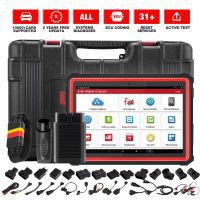

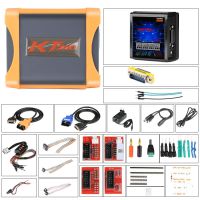

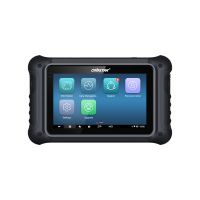
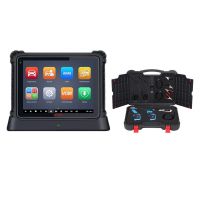


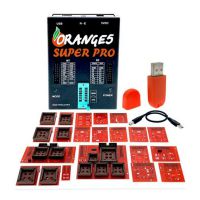
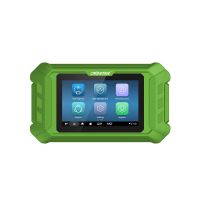
![[Basic Auto Version] KT200 ECU Programmer Master Version Support ECU Maintenance Chip Tuning DTC Code Removal OBD/BOOT/BDM/JTAG](/upload/pro/kt200-ecu-programmer-auto-version-200.jpg)

